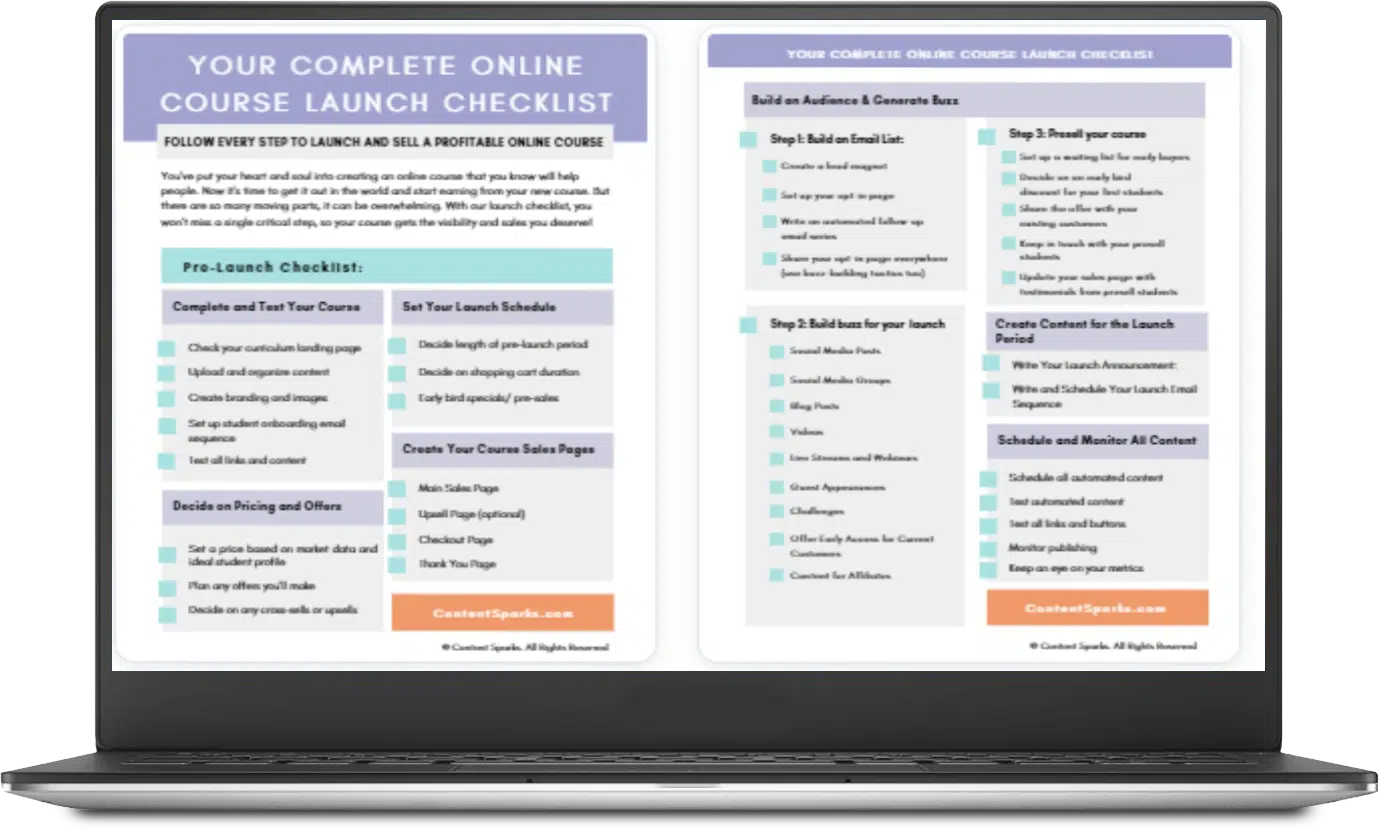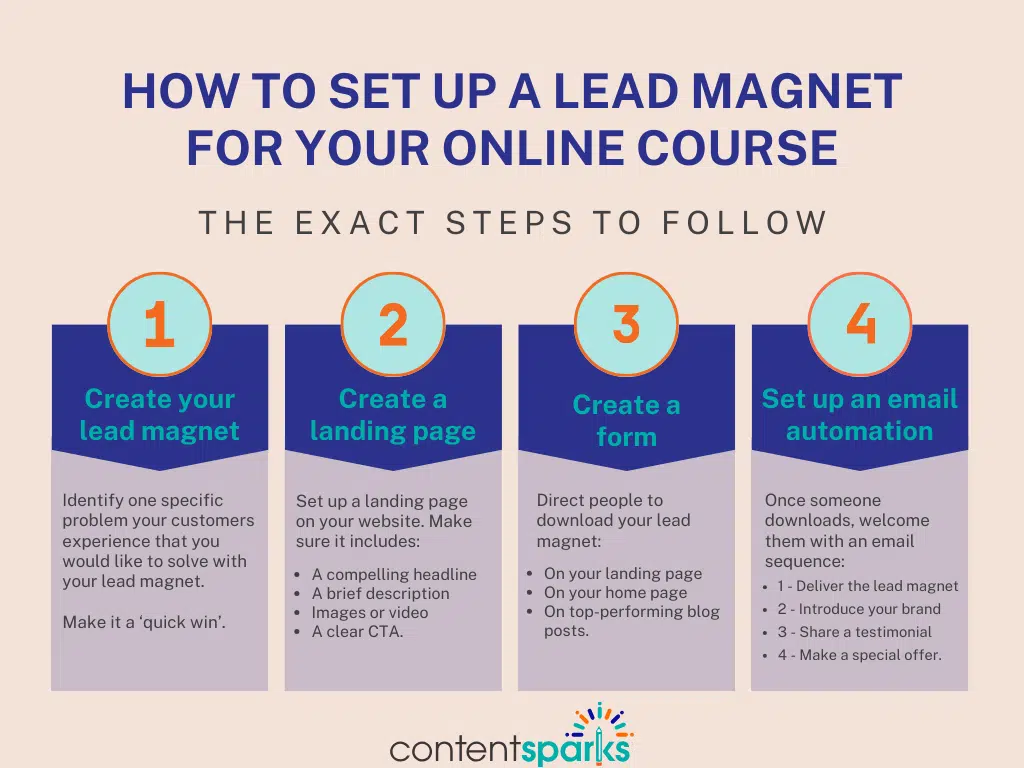How to Create a Lead Magnet For Your Online Course: Tools And Tips
0 comments
0 comments
Okay, be honest: how many blogs have you subscribed to in the past 90 days?
Or rather, how many people have subscribed to your blog in the past 90 days? While “subscribe to our blog” may have worked to build an email list in 2009, it’s not nearly as effective now. Our inboxes are all filled with brands clamoring for attention, and your potential customers are more wary than ever about who they let in.
So what’s a coach or course-creator to do? Offer a problem/solution lead magnet instead.
Lead magnets are highly effective list builders, but they can be tricky to set up and get right on your website. In this guide, I’ll show you the exact process I follow to create a lead magnet that attracts your potential customers and directs them into your email list and funnel.
A lead magnet is a freebie that you give away to entice your ideal customers to subscribe to your list. It could be anything, but the key is to add value, address a specific problem with an easy solution, and catch the attention of potential subscribers.
Common lead magnets are things like:
Make sure your lead magnet solves a problem and that it is compelling enough to encourage sign-ups. Read on to see my favorite types of lead magnets you can create.
Lead magnets can come in a variety of forms (I use several throughout my website!) Here are the ones I find to be most effective:

Pick a type of lead magnet and read on for tools to create it.
As you can see, lead magnets can be extremely diverse. Because of that, there are dozens of tools you could use to create one and place it on your website.
To make things easier, I’ll break them down into tools for:
Tools to Create Workbooks And Downloads
Look no further than these tools to create a workbook or PDF lead magnet:
Tools to Create Videos and Mini-Courses
Looking to create a video or mini-course? Here are my favorite tools to get the job done:
Tools to Create Interactive Content (Quizzes, Surveys, Tools)
Interactive quizzes and assessments are all the rage these days, here are some of my favorite tools to set them up:
Tools For Email Automation and Nurturing
While there are dozens of tools you can choose from for email automation and nurturing, these are my favorites:

The Email List Builder Checklist
Use this checklist to take action with your online course today!
You’ve got a lead magnet idea and the tools for the job. Now it’s time to follow these steps to create and launch your lead magnet on your website:

Create Your Lead Magnet
First, identify one specific problem your customers experience that you would like to solve with your lead magnet. It shouldn’t be a huge challenge, but rather something smaller that can be addressed quickly. Think ‘quick wins’ here.
Once you’ve settled on a problem, select a type of lead magnet from the list above and the tools you’ll use to create your lead magnet. And get to work.
For example, in this post I include a downloadable ‘Email List Builder Checklist’ that also contains a list of lead magnet ideas to guide and inspire you for your own website. The problem I am solving is “I don’t know where to start or what type of lead magnet to create” and the solution I am providing is simple a simple checklist and examples to get you started.
As another example, on other blog posts, I include checklists or templates to provide a practical application for the topic the post covers.
You don’t need to be an expert designer to create a good-looking lead magnet either. Design tools like Canva make it a snap to package up a stunning lead magnet that stops potential subscribers in their tracks.
Now that you have your lead magnet in hand, it’s time to promote it on your website.
The simplest place to start is to set up a landing page on your website to promote your lead magnet. You can style the landing page however you like to match your branding, but be sure to include:
Create a Form for Your Lead Magnet
You’ll obviously have a form on your landing page for your lead magnet but don’t neglect other places on your website.
At a minimum, you should direct people to download your lead magnet:
I like to mix and match different types of forms. For example, you could have a form at the bottom of a blog post and a slide-in or pop-up form that appears when people scroll down the page.
Keep your form simple to encourage conversions, but make sure to get important information like:
You can try asking for more information like a company name, website, and phone number but adding too many fields can lower your conversion rates so beware of making things too complex.
Once someone downloads your lead magnet, it’s time to welcome them to your list.
A simple welcome sequence delivers the lead magnet to your new subscribers and introduces your brand to them. If you don’t have a welcome sequence now, try writing the following emails and space them out a few days in between each send. But don’t space them out too much or people will forget who you are and what you sent:
And voila! Your very own lead magnet funnel for your online course.
Use this lead magnet to build your email list and you’ll have an engaged audience waiting for your next launch.
Just remember to keep sending value-packed, relevant email content to your subscribers. Many new leads may not be ready to buy from you right away. However, the more you help them with their challenges, the more likely they’ll be to buy something in the future!
Ready to grow an email list with high-converting lead magnets? Not sure where to start?
If you have a case of writer’s block or list-building overwhelm, don’t worry. I collected my top 10 lead magnet ideas you can use to build a thriving email list that will wait for your next course launch.
It’s all part of our email list builder checklist that guides you as you nurture your list.
Download the checklist and lead magnet ideas to start growing your audience today!
Enjoy!

Tags